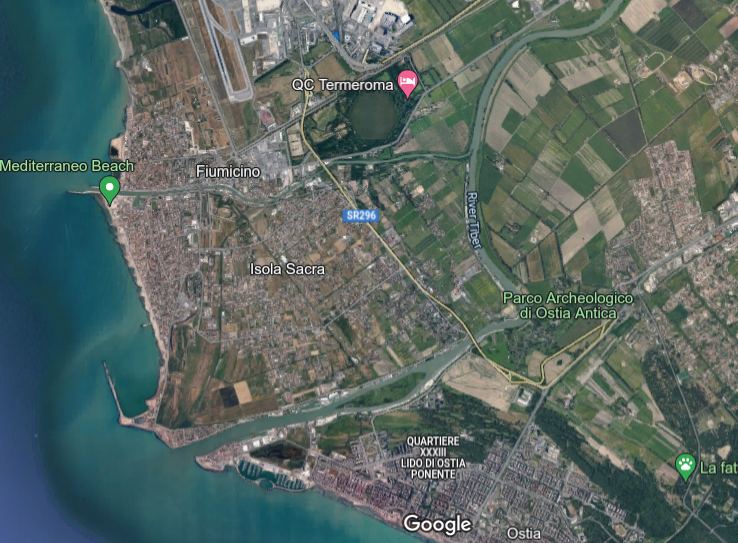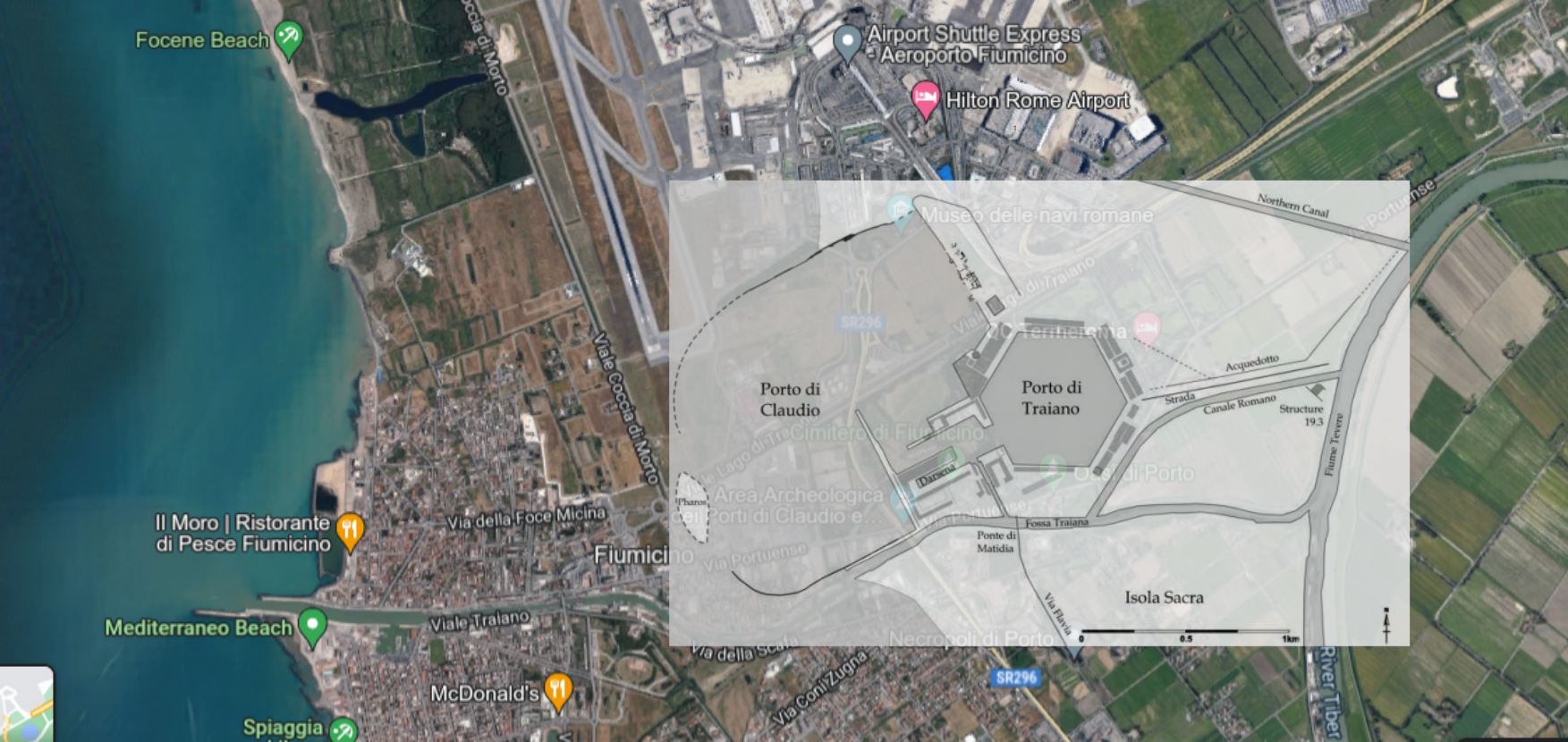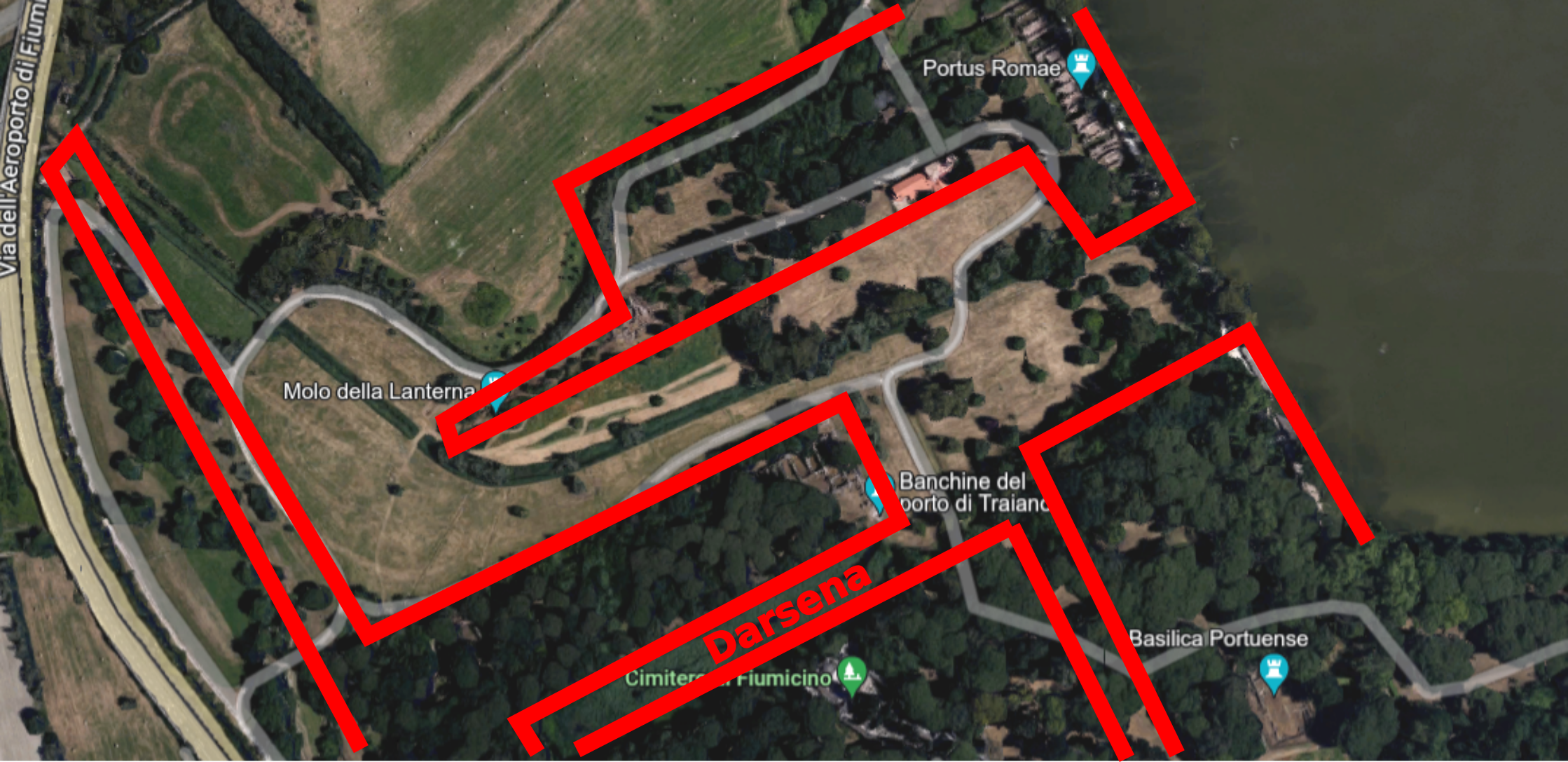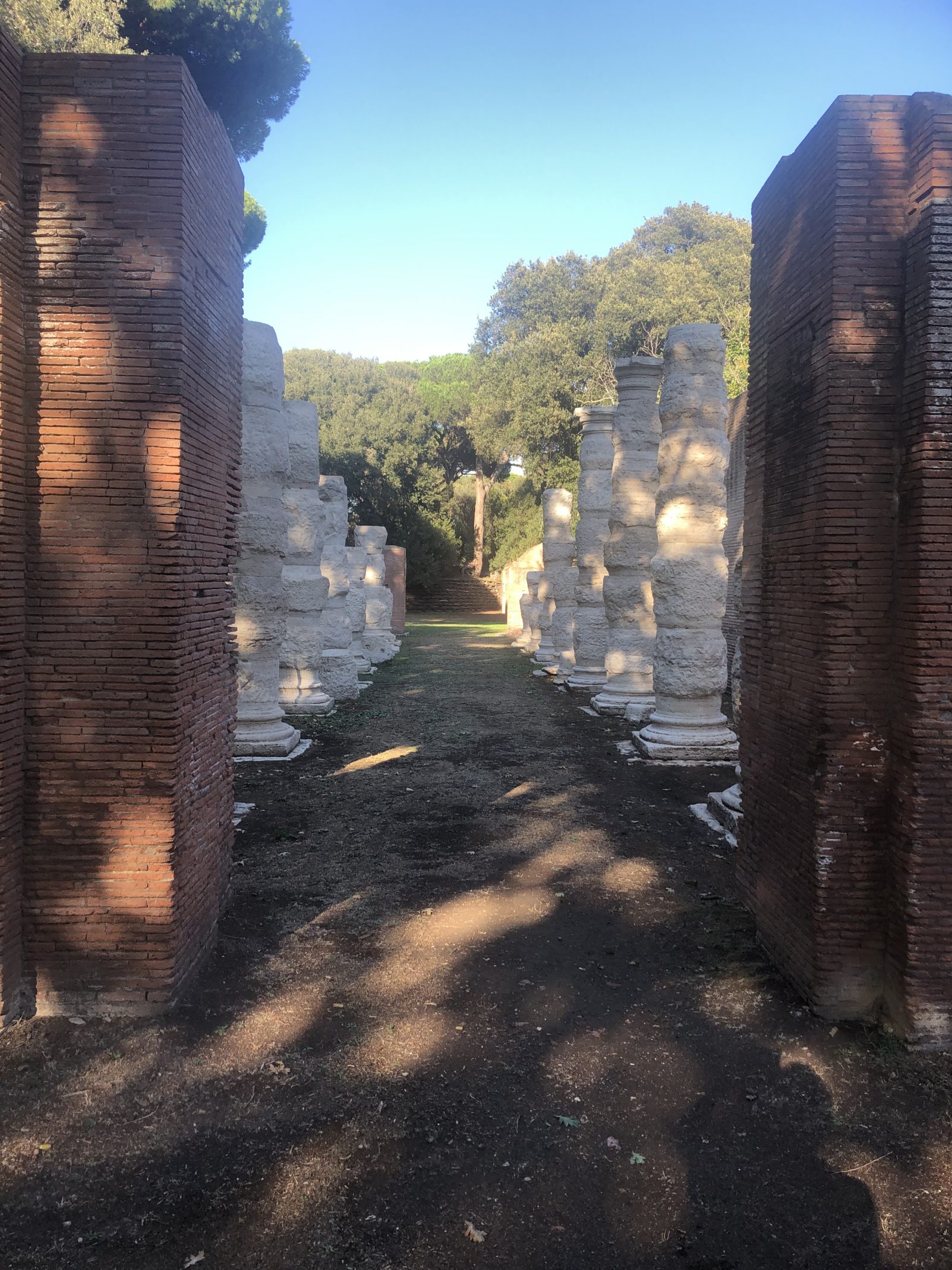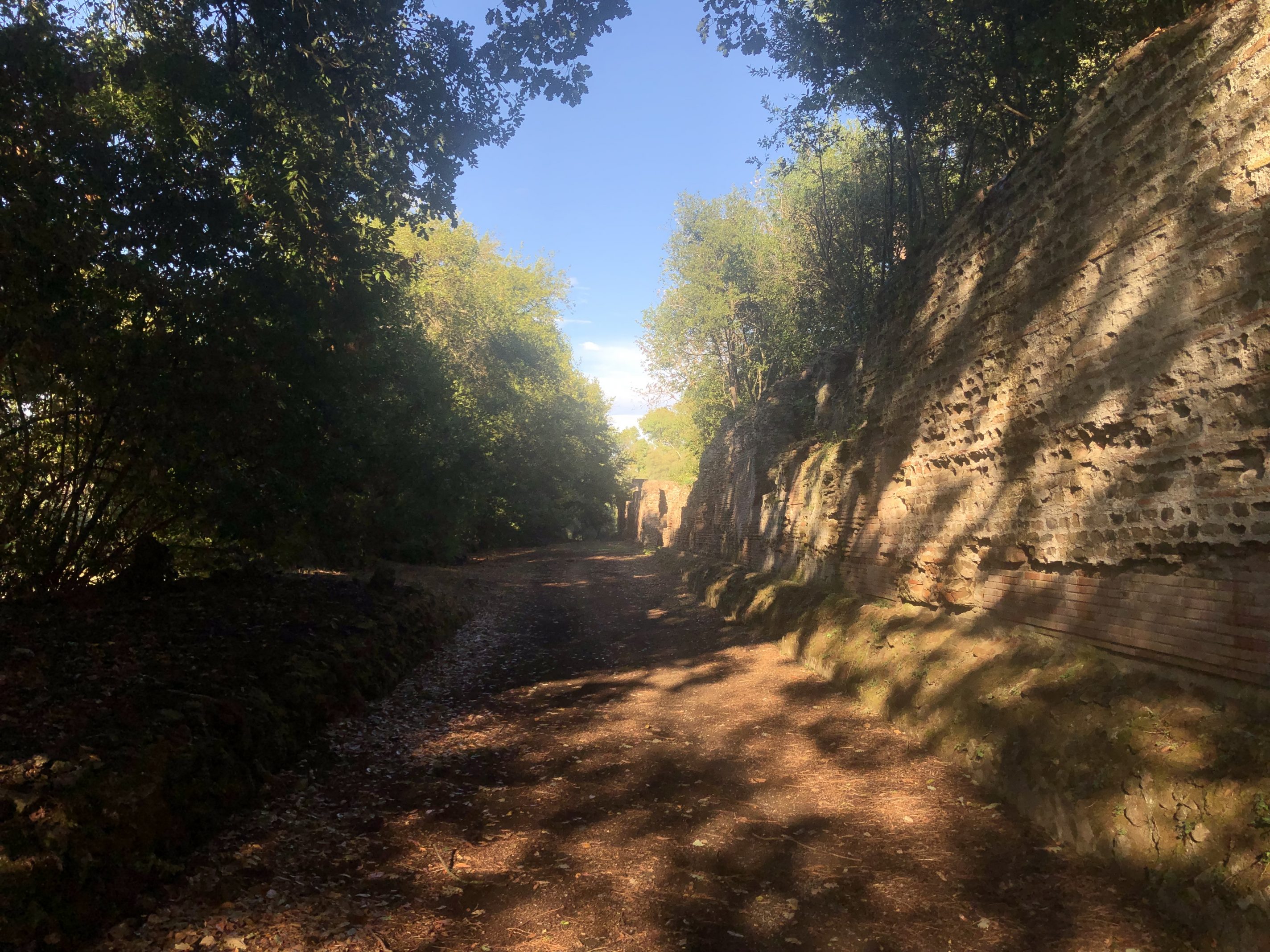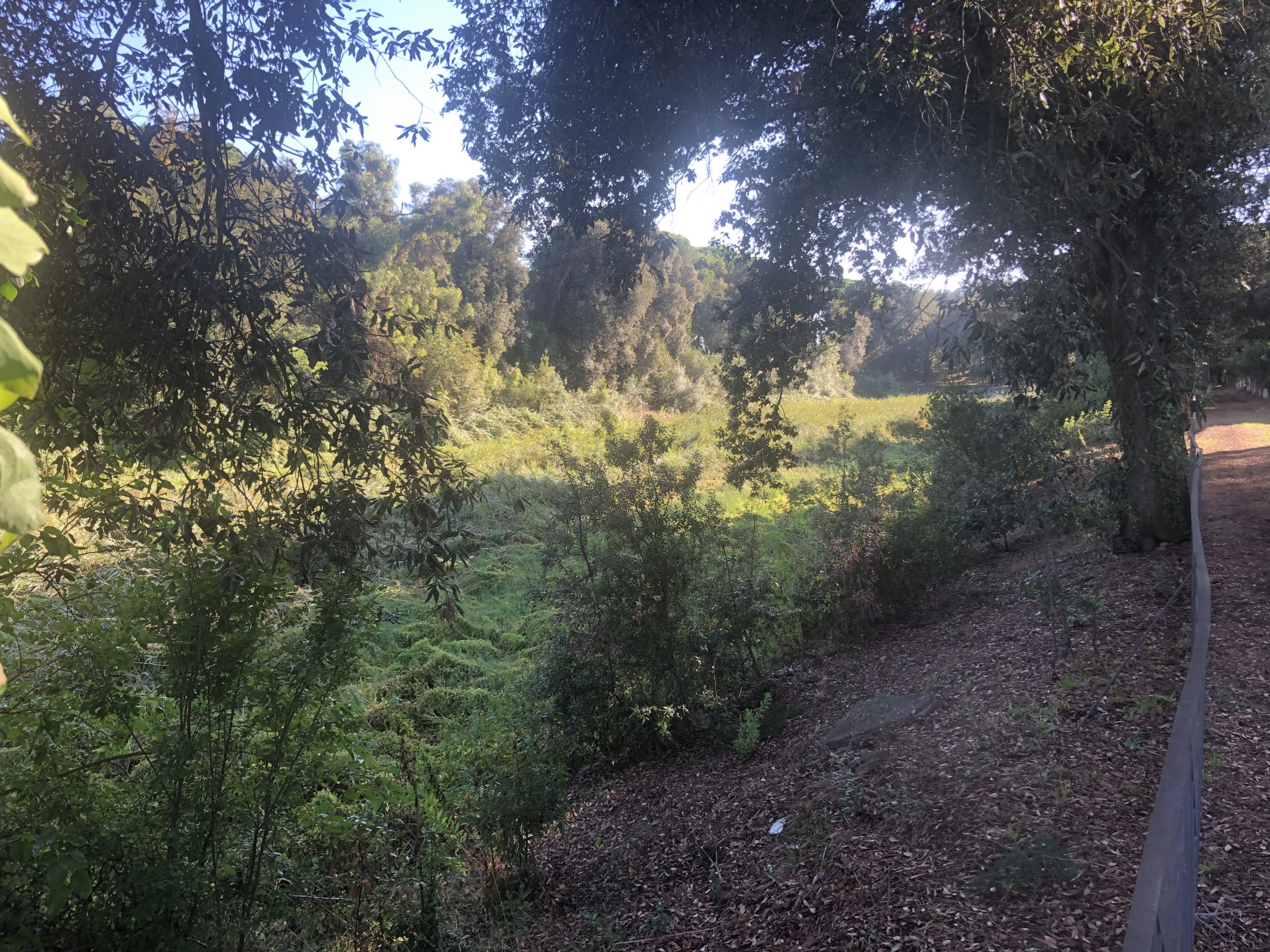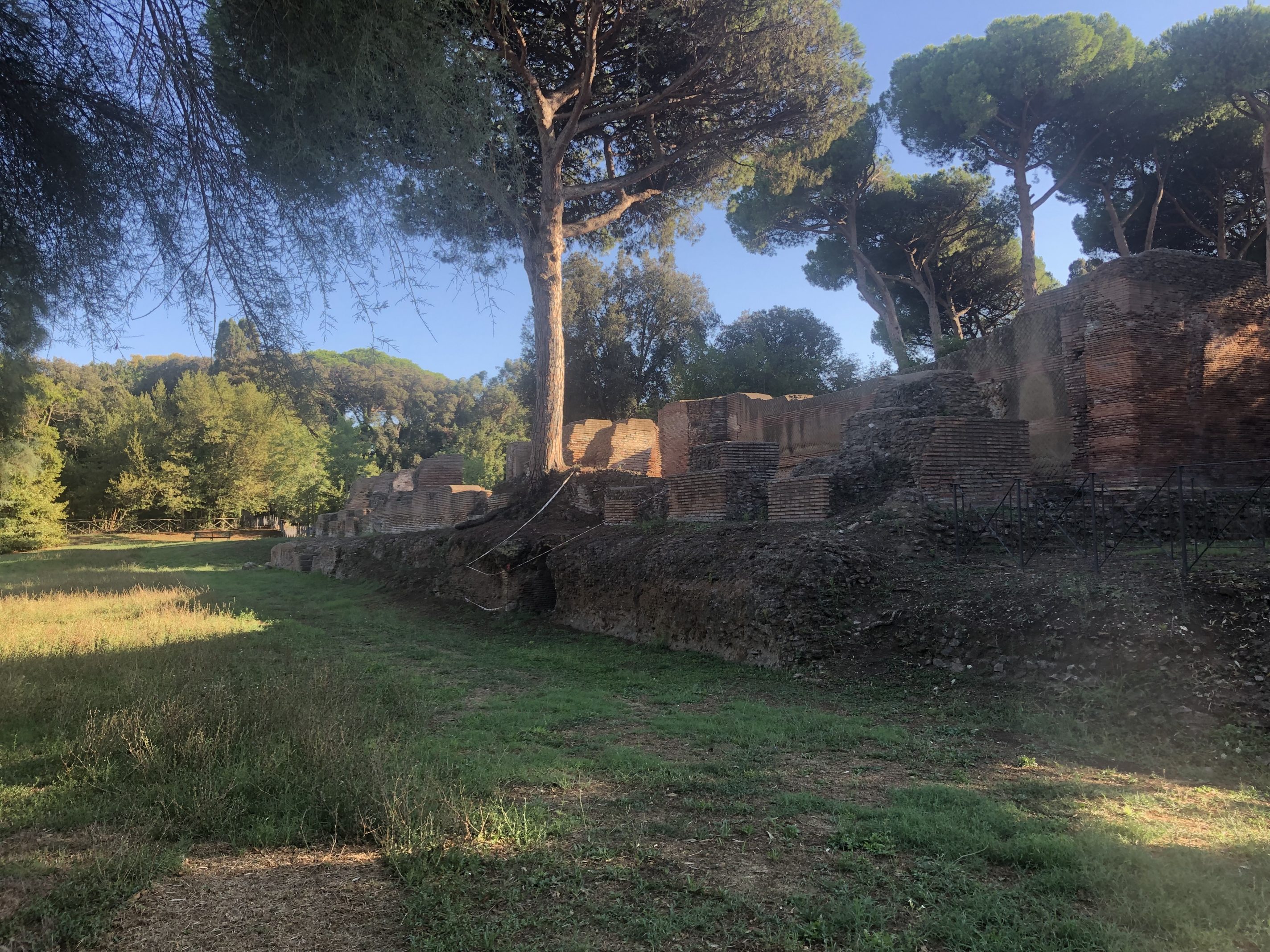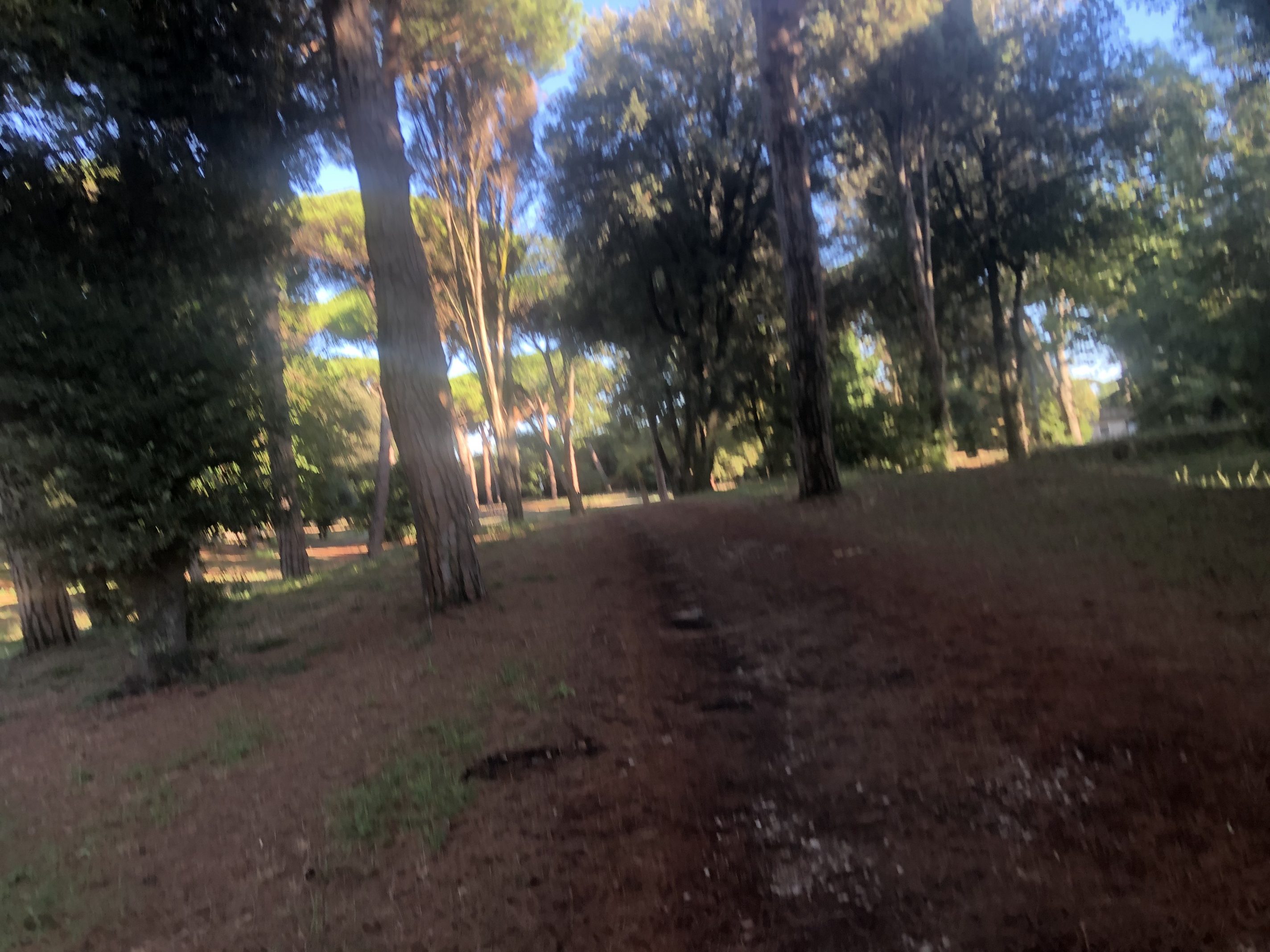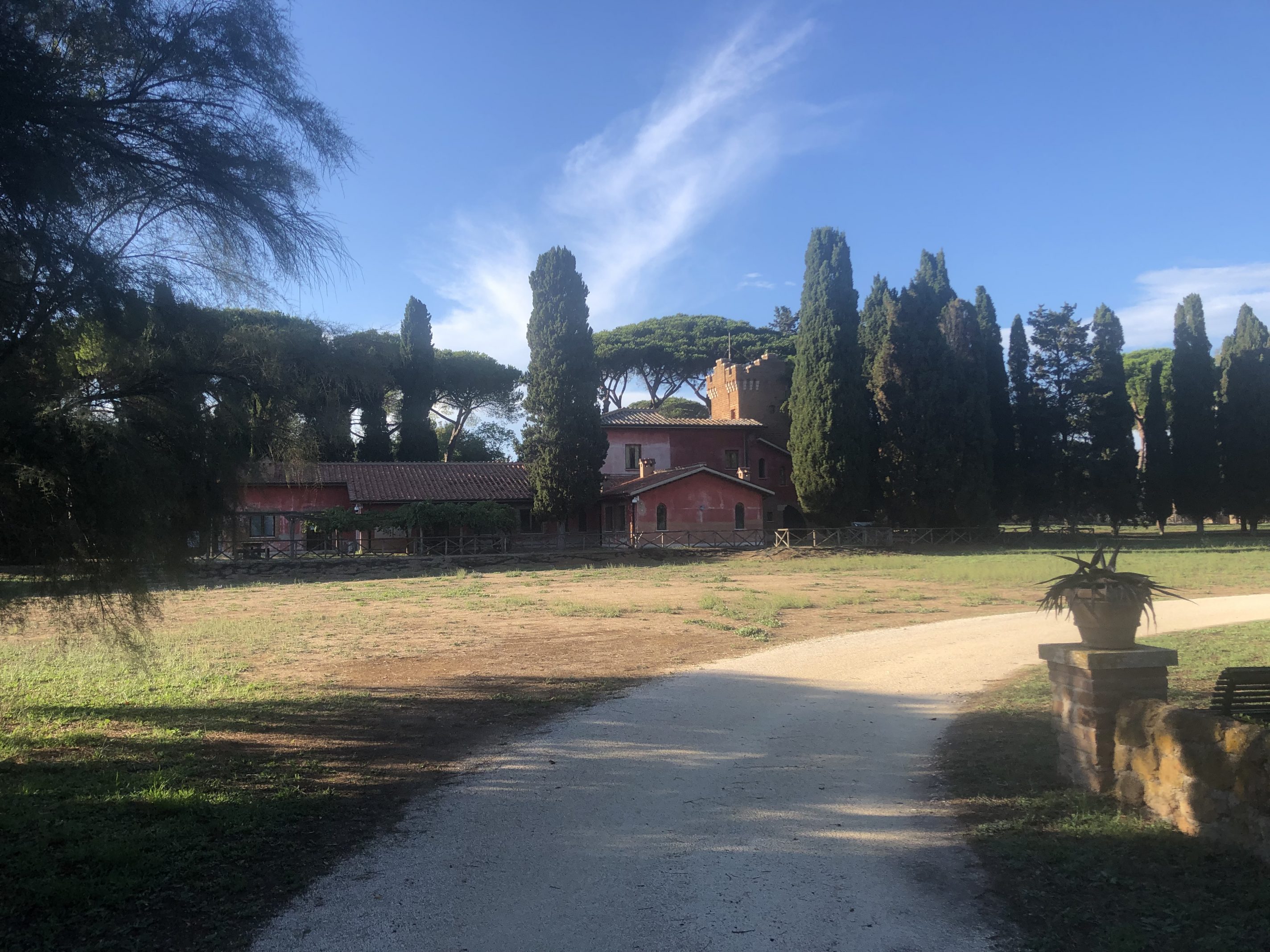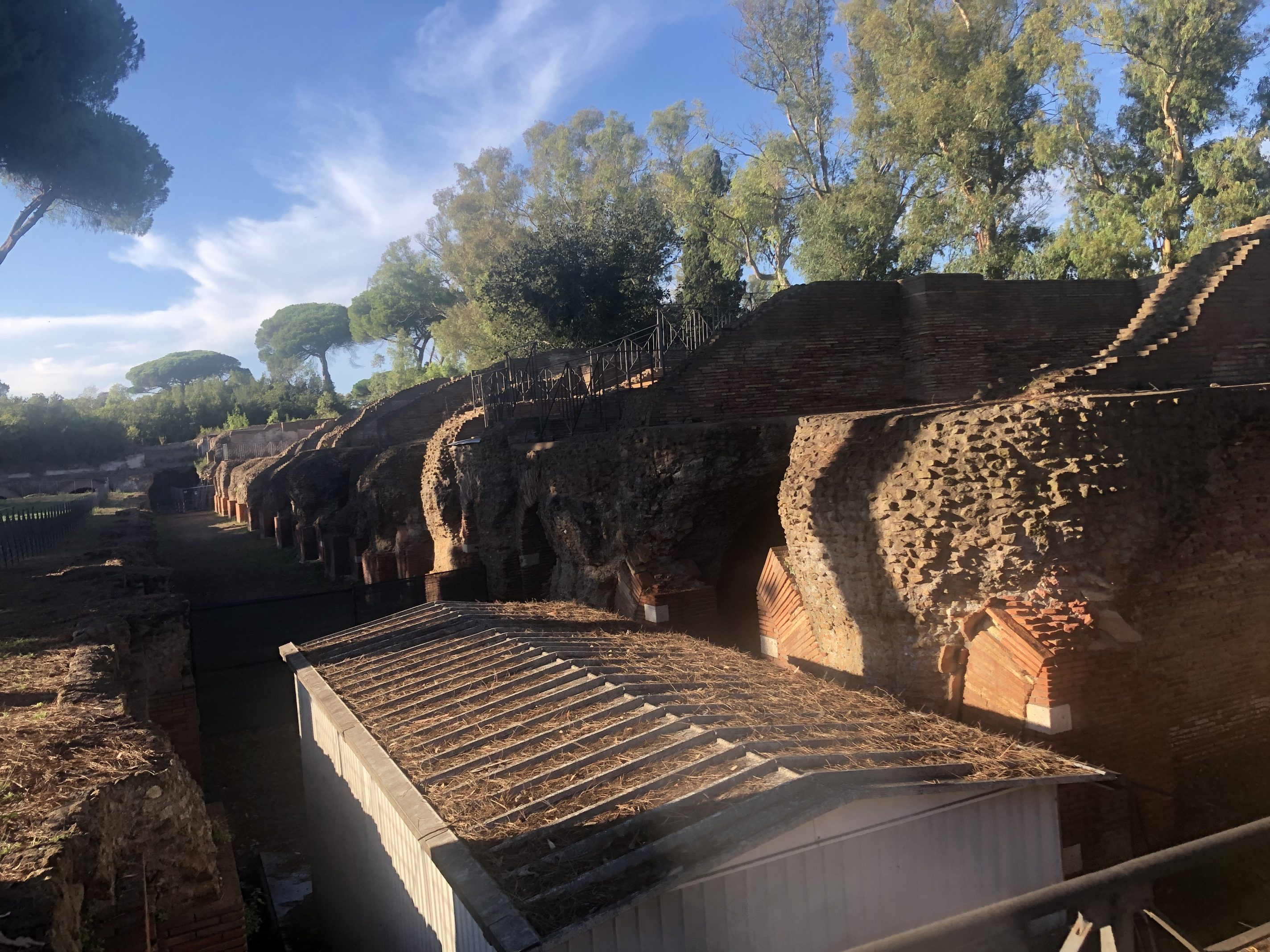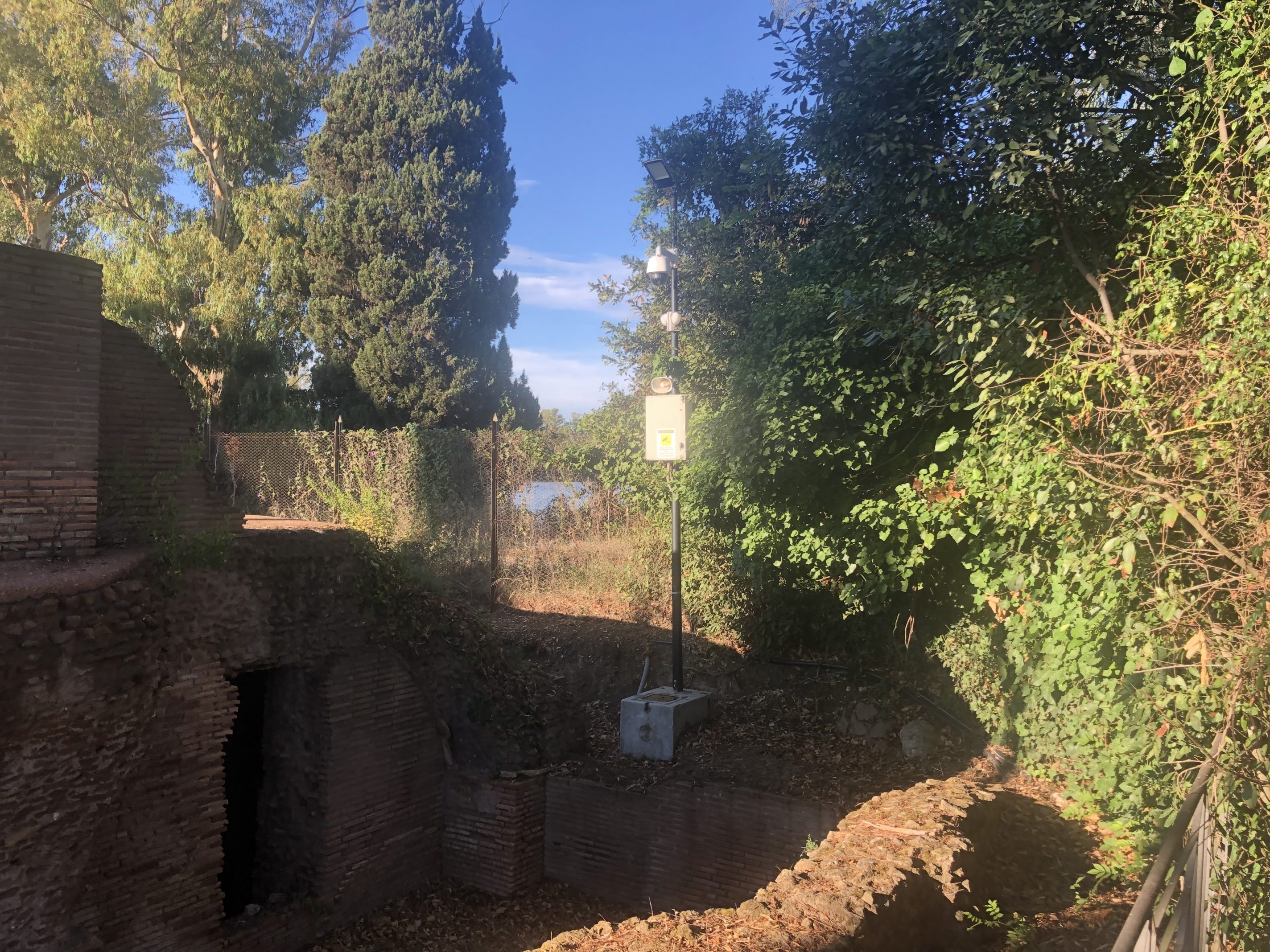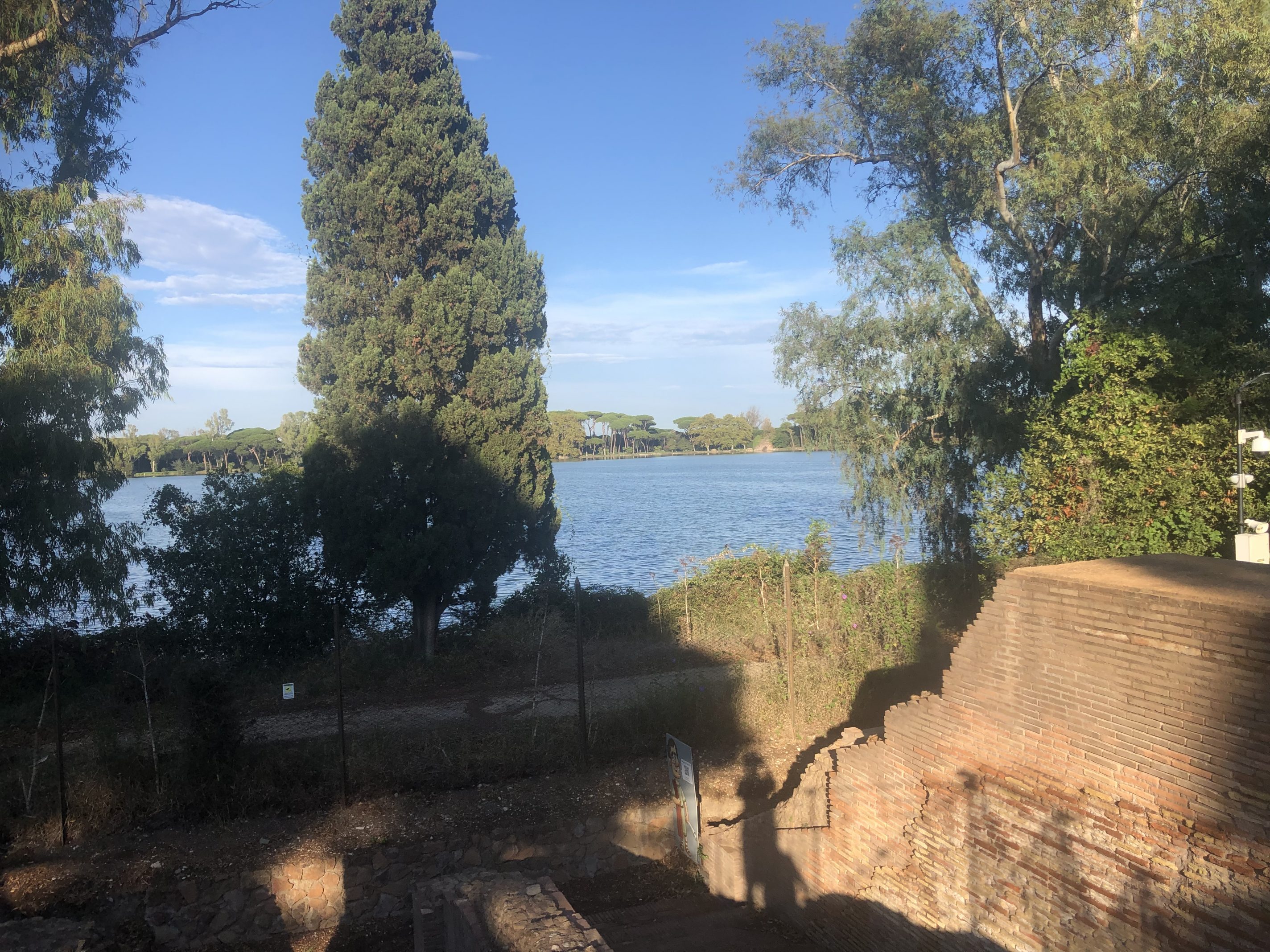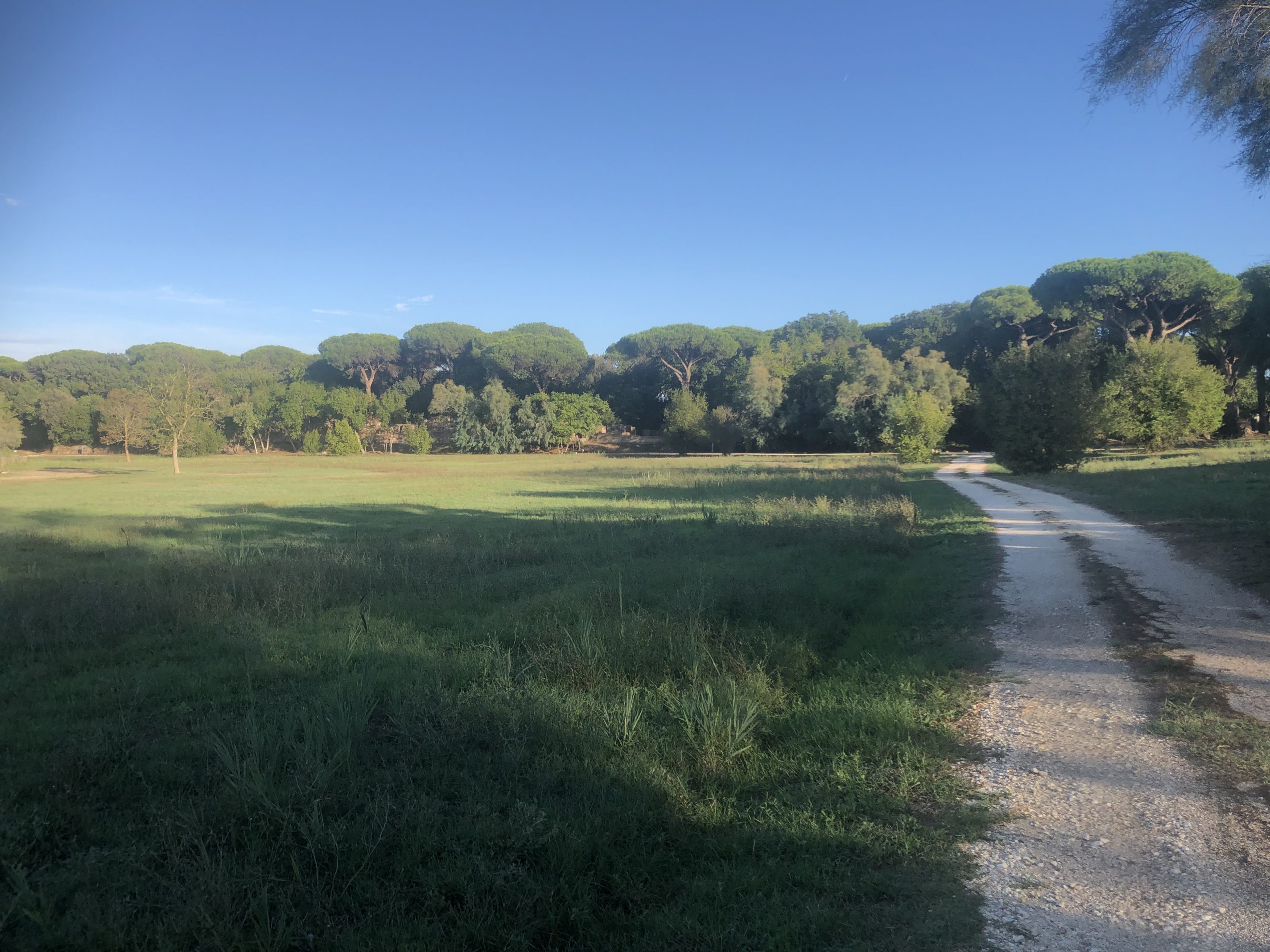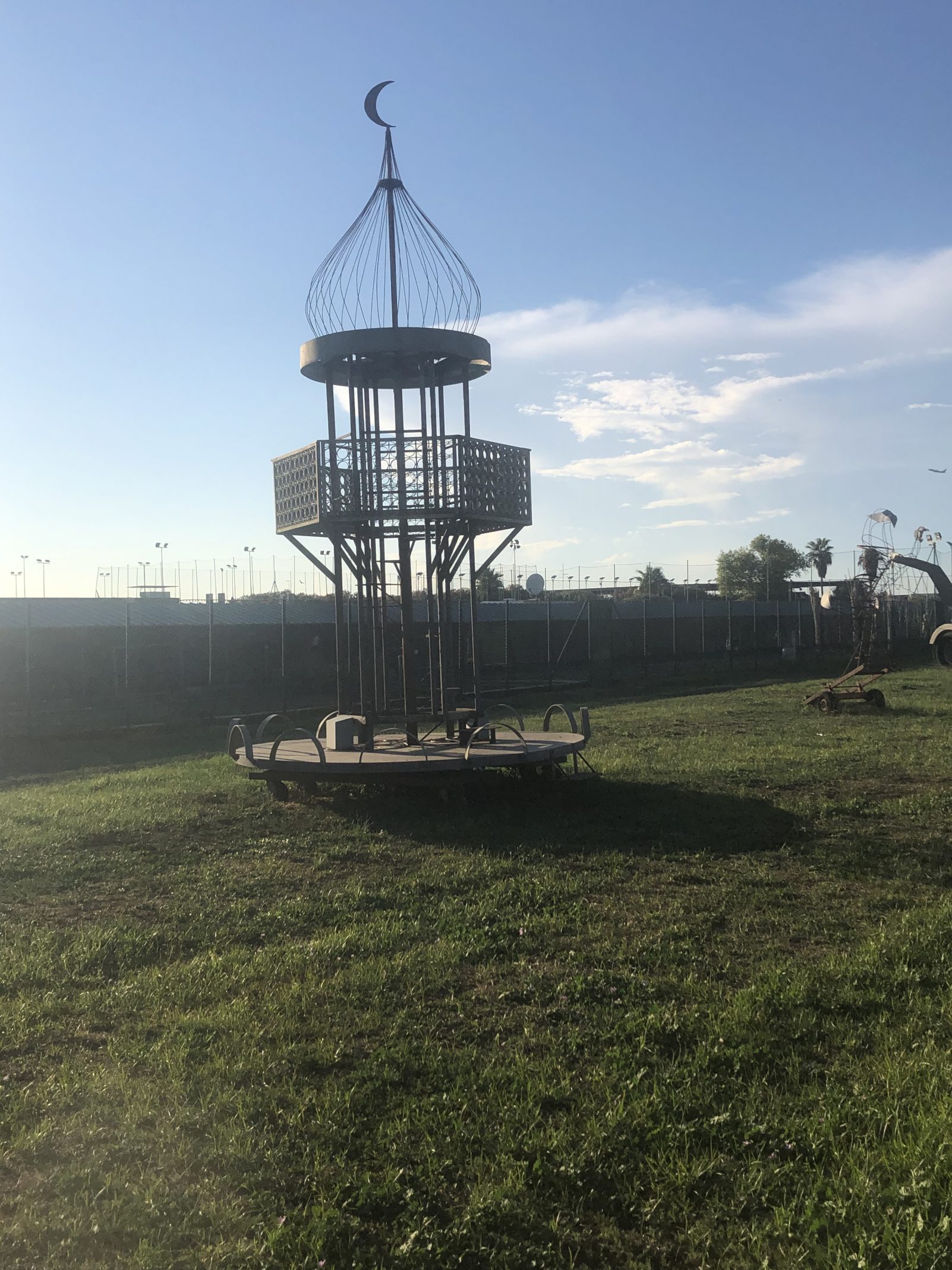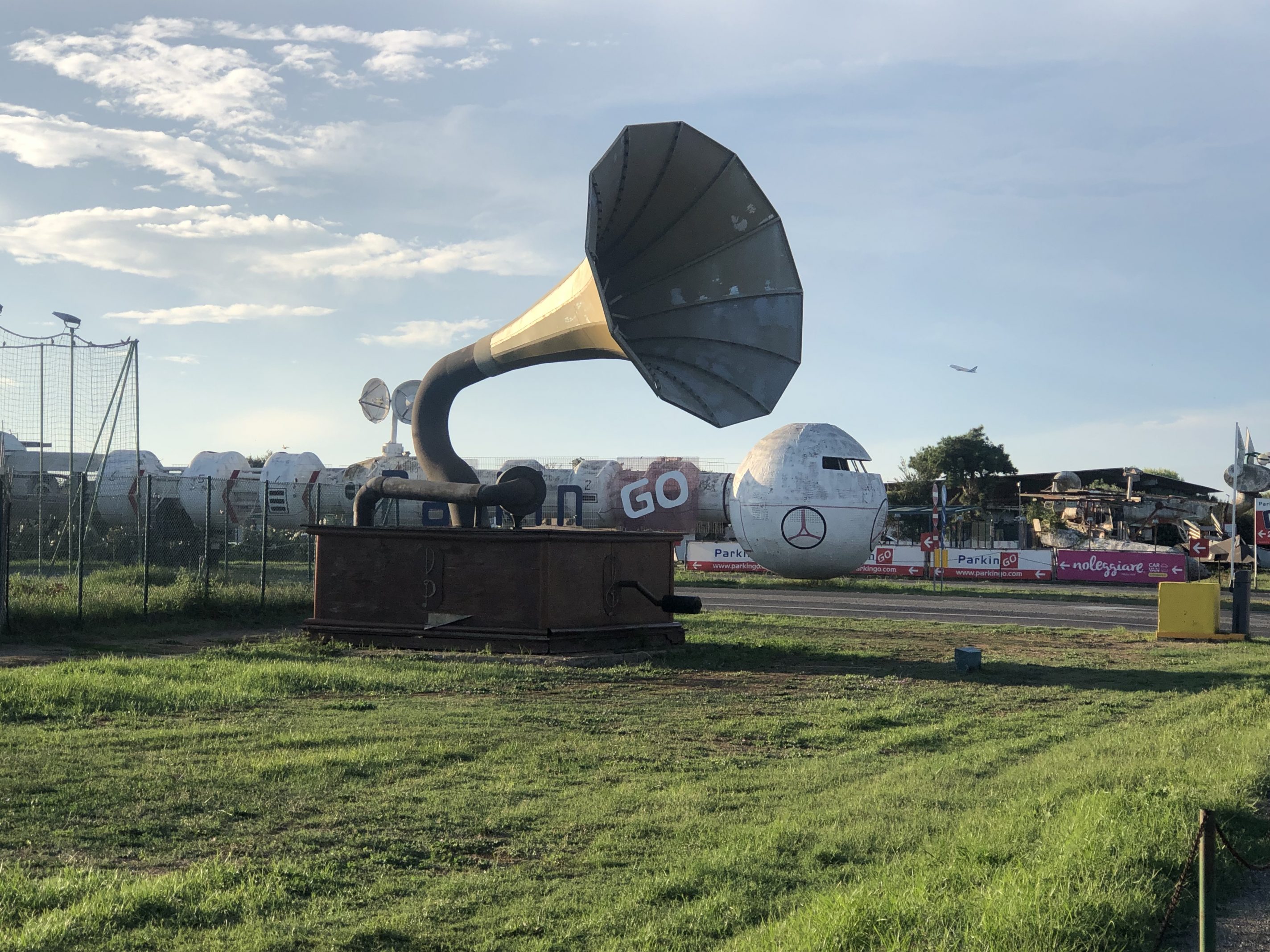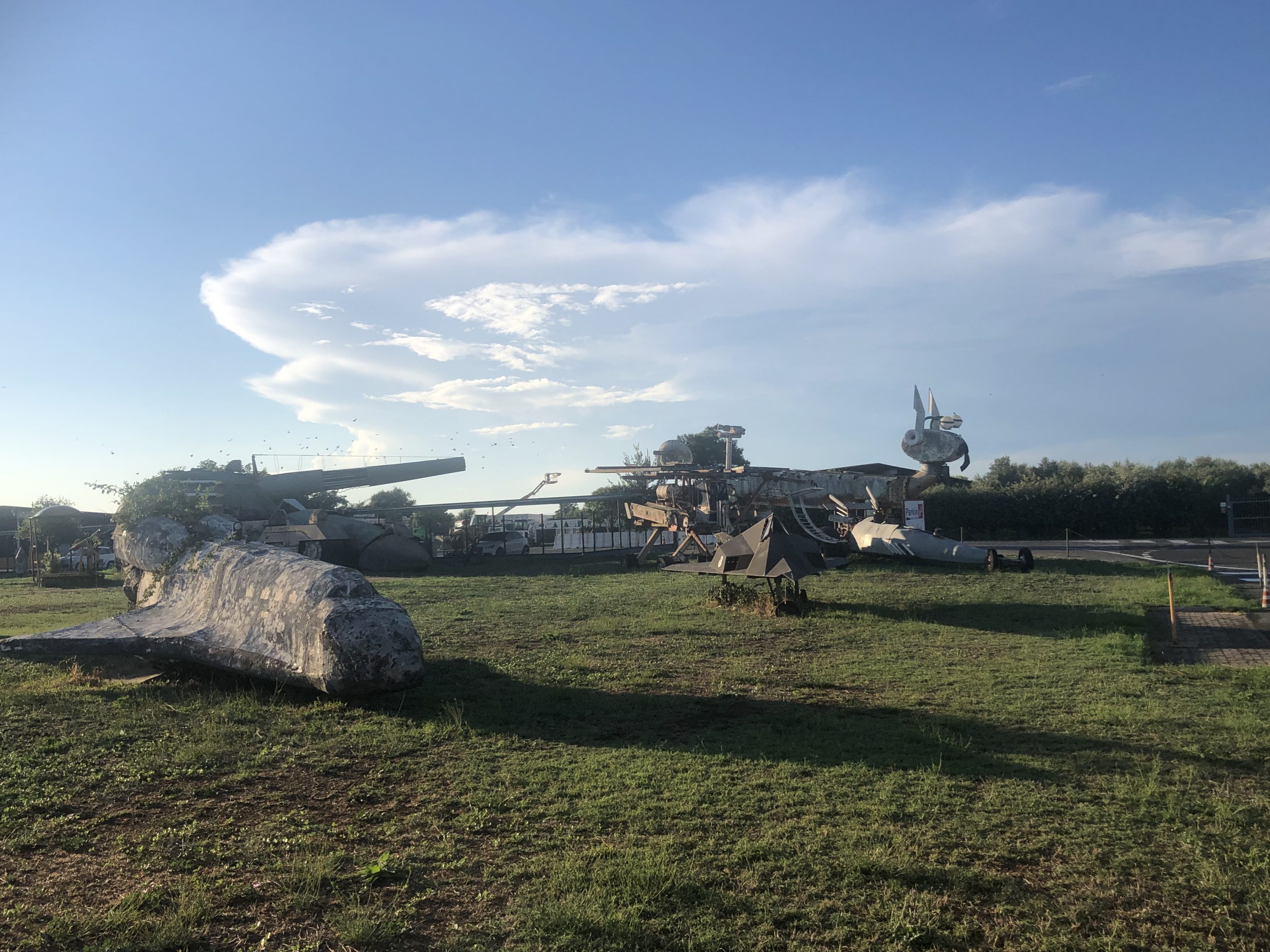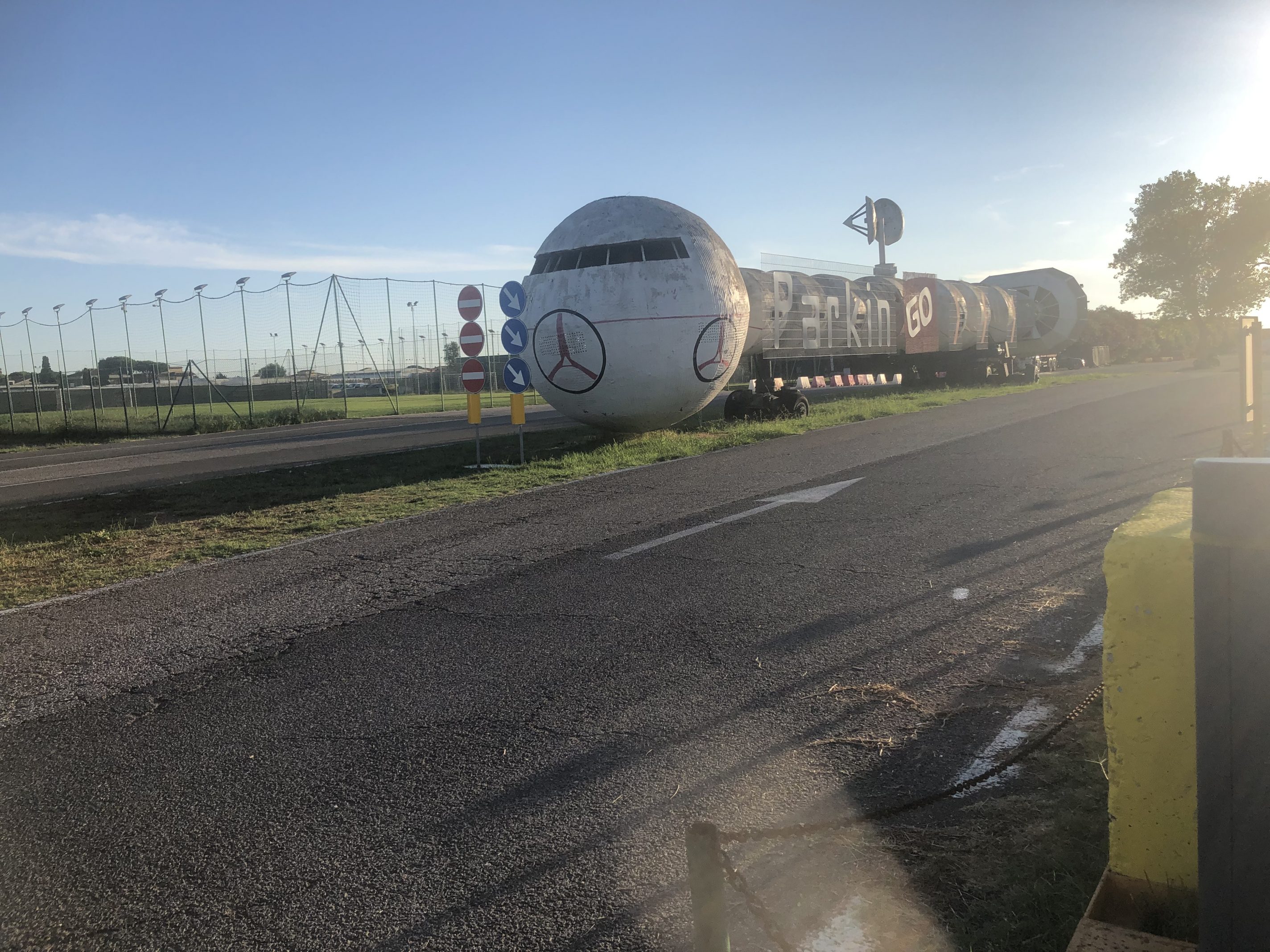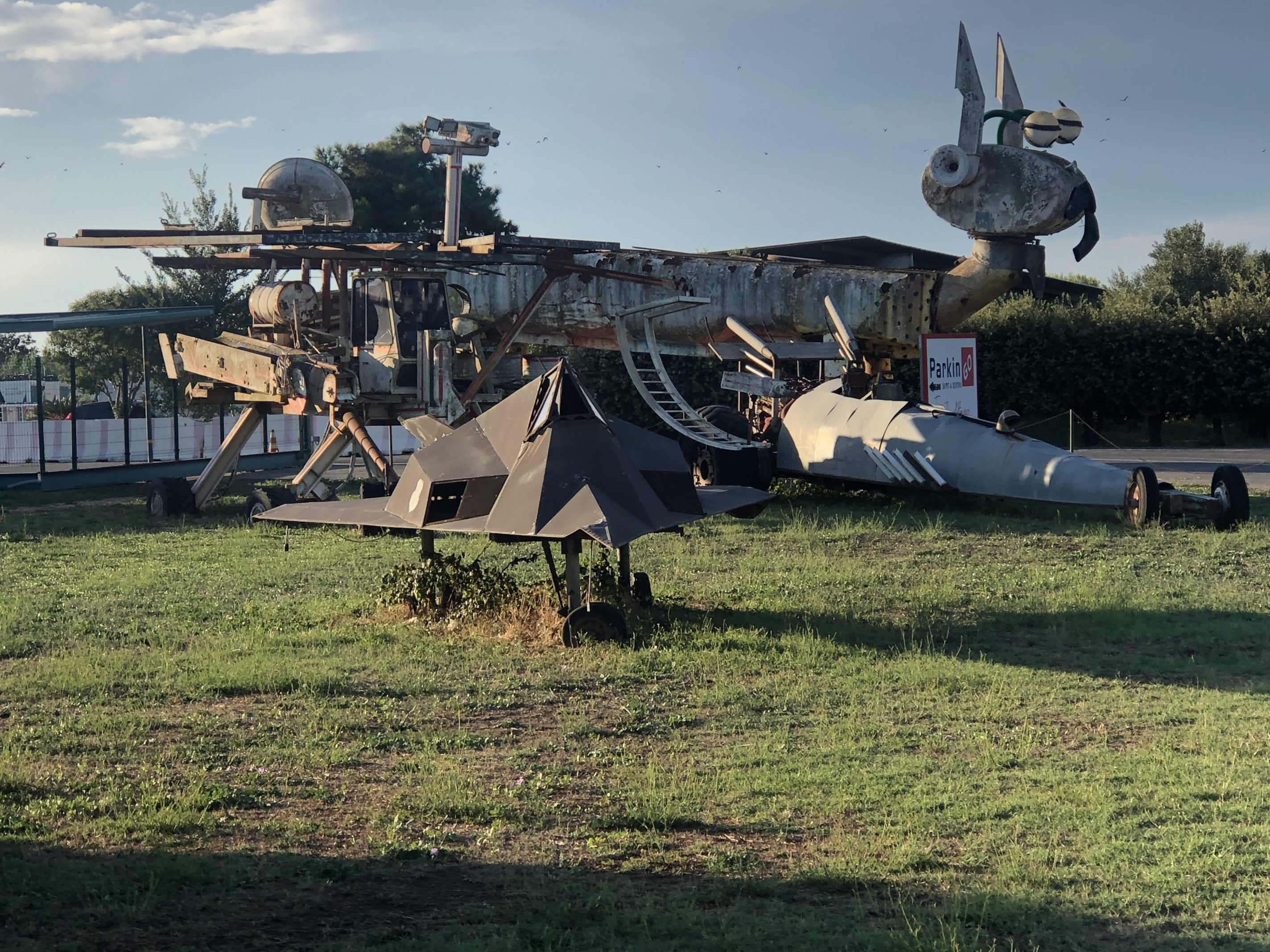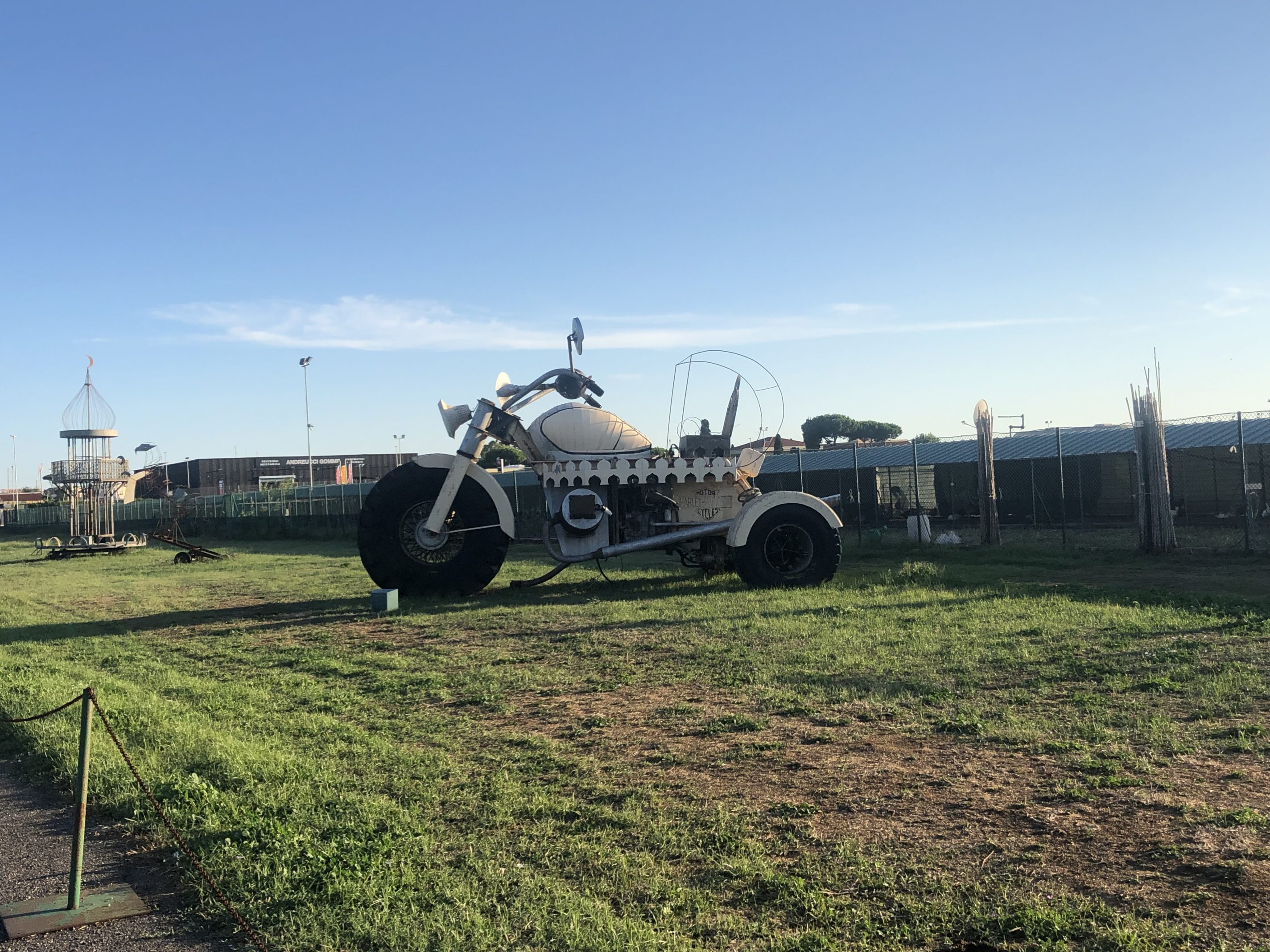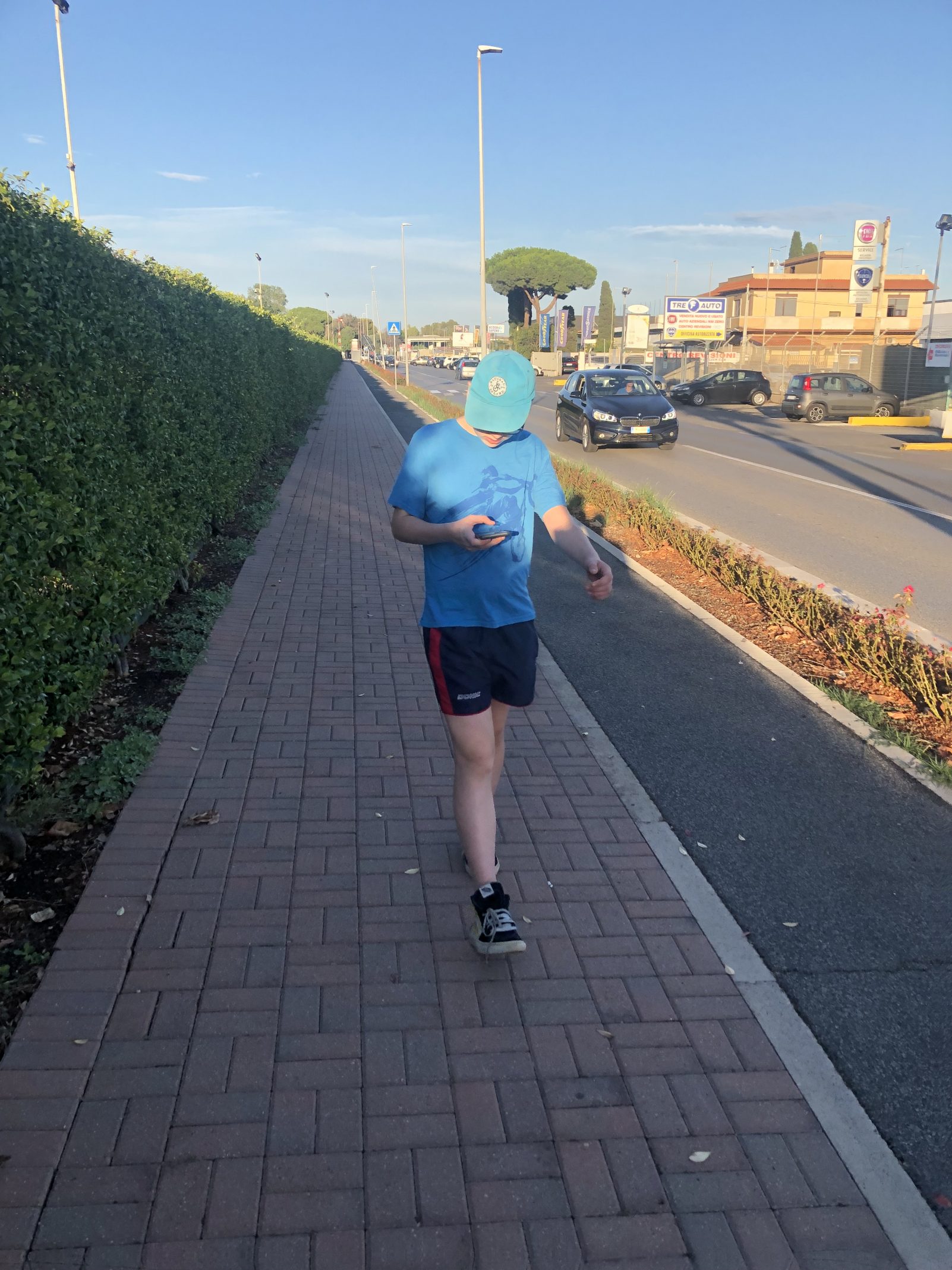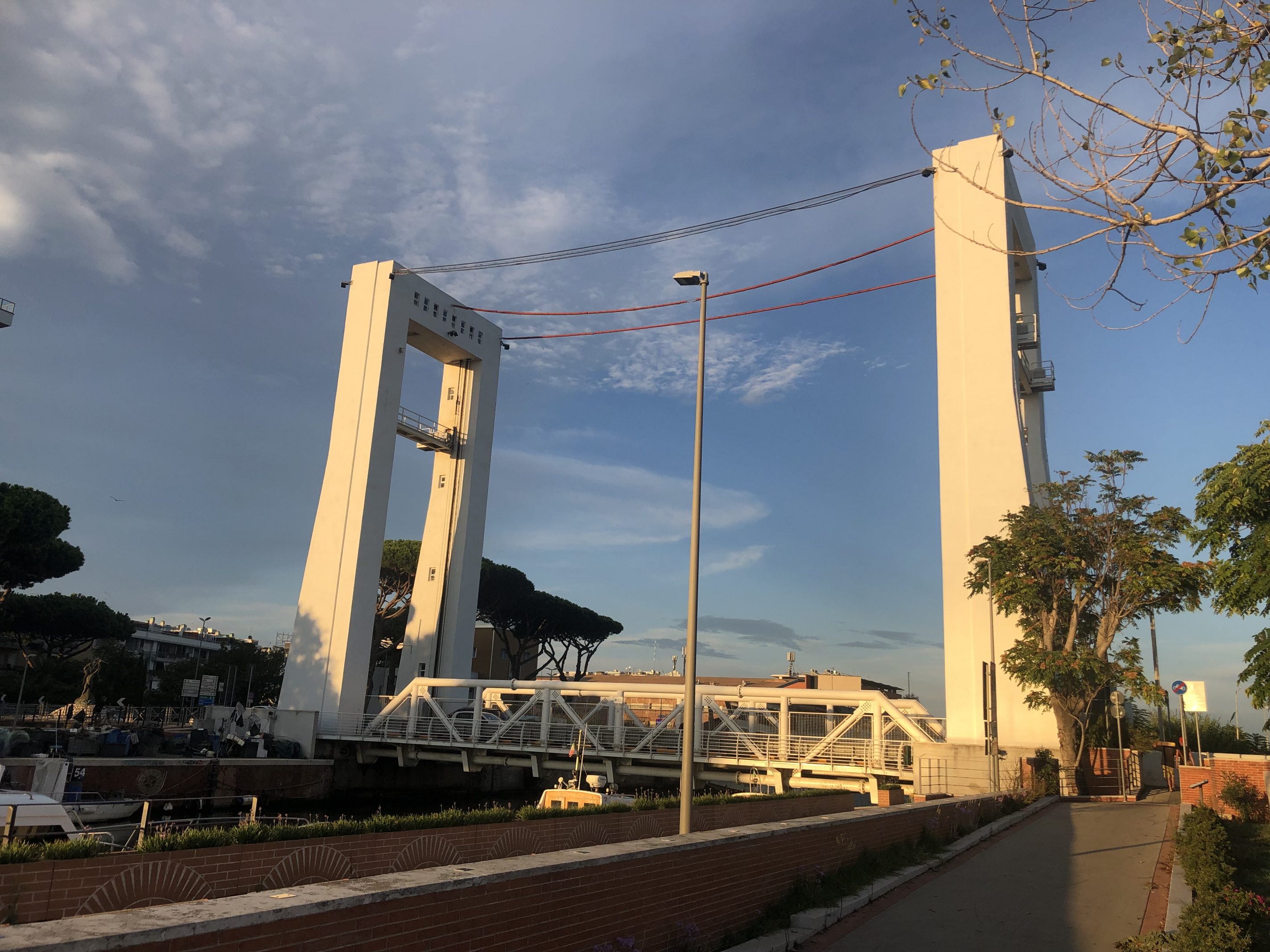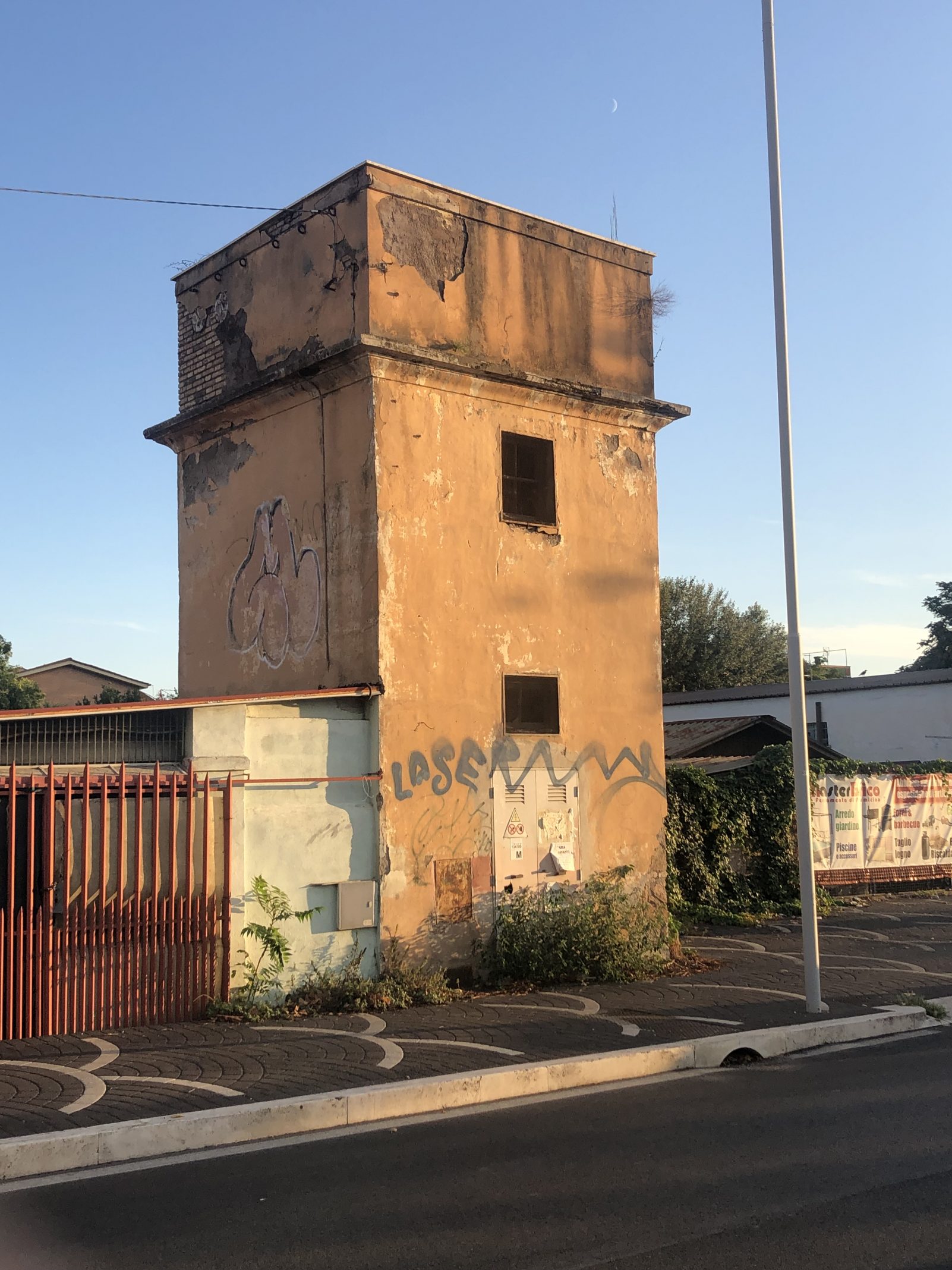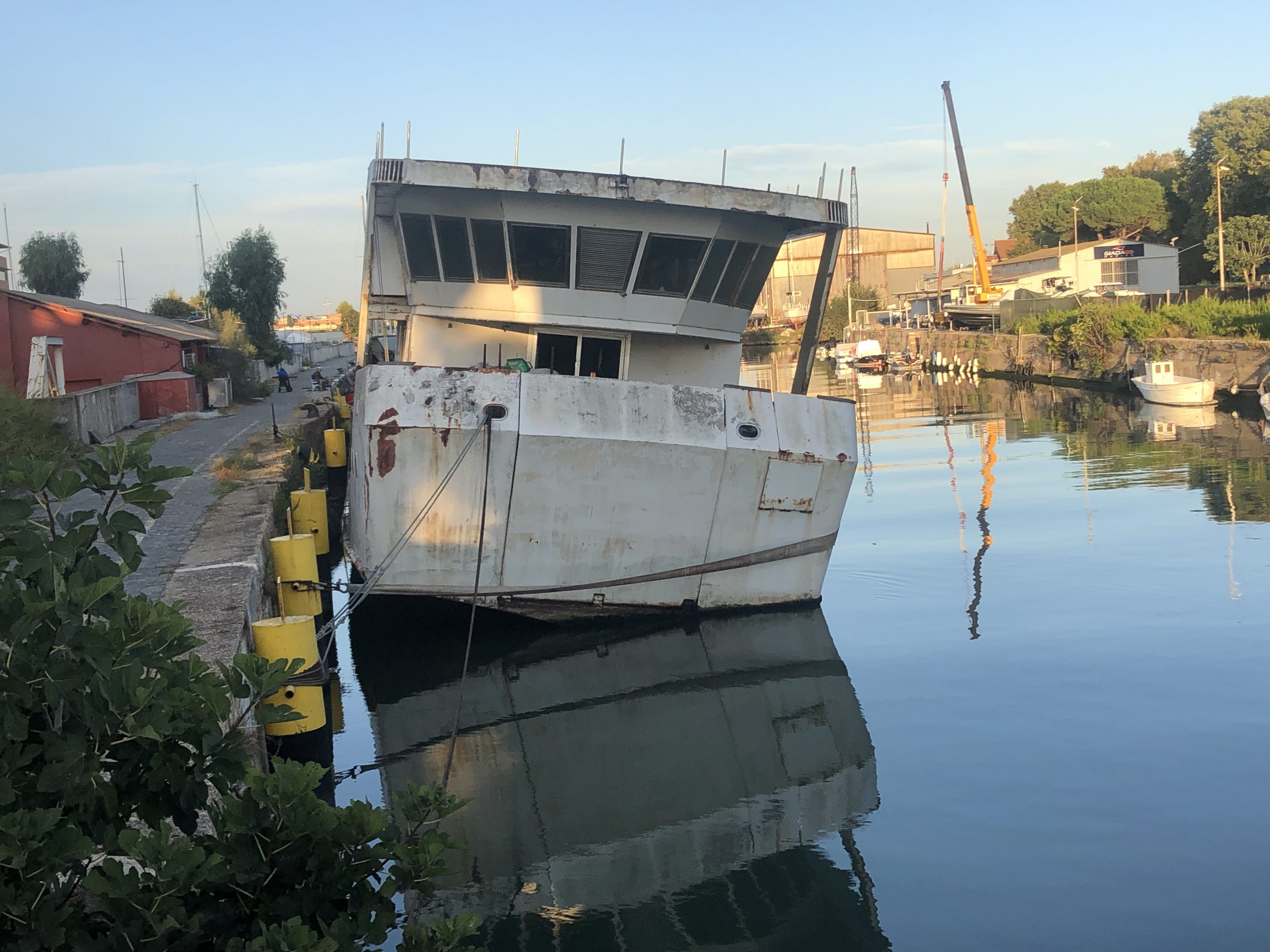History
Ostia or today Ostia Antica may very well be the first settlement of the expanding city state of Rome. It is about 25 km away from the capital. Legend has it that it was founded as fort by Ancus Marcius, the 4th king of Rome in the 7th century BC. The remains of a fort (castrum) are there and an inscription seems to confirm this while oldest archeological finds in Ostia so far date back to the 4th century BC only. The town was in a strategically advantageous position in the mouth of the Tiber giving Rome a sea port and with it access to the Mediterranean Sea. With the continued expansion of Rome and its transformation into the center of the Roman empire, its economical function as trading hub supplying an ever growing Rome with goods and food became more important while militarily, it lost its function.
The debris carried by the Tiber river more and more silted up the harbor of Ostia. In addition it could not fulfill the demands of a growing economy and the associated increasing transfer of goods. Thus Claudius, then the emperor of Rome, ordered the construction of a new harbor further north. The construction work started in 42 AD. The harbor was completed in 64 AD and consisted of a basin with 2 curved piers, a multistory lighthouse on an artificial island between the 2 curved piers, docks and warehouses. As sea harbor, it complemented the river harbor of Ostia that had a key role in supplying Rom with grain. Large ships arriving from the Mediterranean sea would be unloaded at the harbor of Claudius and the goods would then be transported to Rom in smaller vessels sailing up the Tiber river.
Soon, the harbor of Claudius also started to silt up with sediments carried downstream by the Tiber. And even though a massive structure, it apparently became too small. Trajan extended the harbor from 100-112 AD with a hexagonal basin thereby offering many more docking points to large seagoing ships.
After the decline of the Roman empire, sometimes in the 6th of 7th century AD, the harbor was abounded while the canals continued to be used into the middle age.
Over the last 2000 years, the Tiber continued to deposit sediments and debris on its mouth. The shoreline of today hence has moved approximately 2 km to the west.
The visit
Felix and myself planned to visit the ancient harbor town of Ostia Antica. Google maps pointed out that it is a mere 2 km/20 minutes walk from the hotel. Google did however did not take the bridge over the Tiber into account: We arrived at the bridge only to find out that it is not possible for pedestrians to cross it. There were no walkways and a constant flow of cars which made it too dangerous to just use the street. Back to the hotel, we tried to go there by bus, only to find out that the tobacco shop that sells the tickets was closed until 4:30 pm. We went to the pool area instead, bought bus tickets at 4:30pm and went to another archeological site, the Porti di Claudio e di Traiano, As it was already 5:30 pm and as the entry guard probably seeing his chance of timely or even early return to home slip by, we had to negotiated our way in. Not being able to speak Italian and relying on google translate, this was a little bit tardy. After promising that we would keep our visit really short he I would let us in. On the way to the hexagonal basin, we got a little bit of course. Luckily another guard had spotted us and guided us to the base of the store houses and a lookout point over the lake. All in all, I was quite impressed by the enormity of the construction work that was carried out in relative short time. As only basic construction machinery of the day was available, I am pretty sure that the “electric motor” of the time was in heavy use: Slaves.
On the way back we passed by an art park with a monumental trike, a huge gramophone, a carriage, and 2 vessels named “Discovery2: One was the space ship from the movie 2001 – A space odyssey, the Discovery One, and the second one was a concrete model of a space shuttle, the Discovery.
